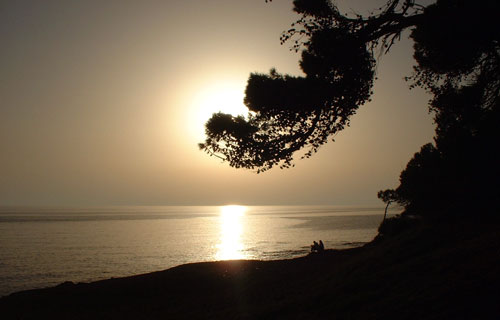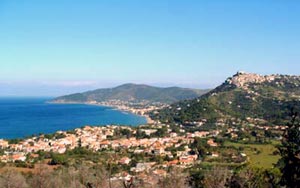

|
Viale C. Grande 21 Santa Maria di Castellabate (Sa) Tel. +39 339 6943397 P.I. 05020260658 info@residence-halesia.it Privacy |

|

|
|
| Home | Apartments | Garden | Excursion | Where | How to reach us | Contact | The Mansarda |
| Where |
 The National Park of Cilento and Vallo di Diano is the second largest Park in Italy, stretching along the Tyrrhenian coast to the
foot of the Appennino, Campano-Lucano, including the peaks of the Alburni; the Cervati and the Gelbison ranges, not forgetting the
coastal spurs of Monte Bulgheria and Monte Gelbison.
The National Park of Cilento and Vallo di Diano is the second largest Park in Italy, stretching along the Tyrrhenian coast to the
foot of the Appennino, Campano-Lucano, including the peaks of the Alburni; the Cervati and the Gelbison ranges, not forgetting the
coastal spurs of Monte Bulgheria and Monte Gelbison.In June 1997, the Park was included into the net of the MAB-UNESCO Biosphere Reserve. Because of its variegated Geological conformation, Cilento is able to offer various holiday possibilities, from the splendid marine resorts to the rugged, green mountain areas. But, apart from the local wonders of nature, the Park and its immediate neighbours are home to various, world-famous archaeological sites and monuments, like the archaeological sites of Paestum and Velia; the equally famous Carthusian Monastery of Padula and the many historic towns; castles; churches and sanctuaries. History and myth continually entangle, creating that special fascination which has, for thousands of years, led man to venture outside his boundaries. It was here that Ulysses resisted the singing of Leucosia, the mermaid; Aeneus left his faithful friend, Palinuro, on these shores; Jason led the Argonauts here, the Greeks chose to found Poseidonia and the philosopher, Zeno, his School of Thought, while in modern times, Gian Battista Vico wrote the "New Science". There has never been an ancient, or a modern traveller, who hasn't surrendered to the wild and mysterious fascination of this land.  There are still remains of the original fortification alongside the road, leading up to the summit of Monte Gulia,
into the citadel. Set between the two famous headlands, Tresino and Licosa, Castellabate is enriched by the
enchantment of its surroundings, especially for the narrow, picturesque streets of its historic centre. At the
beginning of the 12th century, the 4th Abbot of Cave dei Tirreni, Costabile Gentilcore, was alerted to the dangers
being run by his people during the raids by brigands and pirates. In 1123, he decided to build a large fortification:
the castle. Beato Simeone completed the castle and, in honour of its founder, Abbot Costabile, named it
"Castellum Domini Abbatis" (Castle of the Abbot). Because of its significant, historical location, it has become
a tourist "must", for those wishing to immerse themselves in its mediaeval atmosphere. A panoramic, coastal road,
opened in the 40's, has allowed the small, sea-side village of Santa Maria to become sought out, by tourists from
all parts of the world, for its uncontaminated beaches. Today, Castellabate is a centre, where, on pleasant walks,
one can find small, typical shops and try the local dishes of the Mediterranean diet in the local restaurants.
There are still remains of the original fortification alongside the road, leading up to the summit of Monte Gulia,
into the citadel. Set between the two famous headlands, Tresino and Licosa, Castellabate is enriched by the
enchantment of its surroundings, especially for the narrow, picturesque streets of its historic centre. At the
beginning of the 12th century, the 4th Abbot of Cave dei Tirreni, Costabile Gentilcore, was alerted to the dangers
being run by his people during the raids by brigands and pirates. In 1123, he decided to build a large fortification:
the castle. Beato Simeone completed the castle and, in honour of its founder, Abbot Costabile, named it
"Castellum Domini Abbatis" (Castle of the Abbot). Because of its significant, historical location, it has become
a tourist "must", for those wishing to immerse themselves in its mediaeval atmosphere. A panoramic, coastal road,
opened in the 40's, has allowed the small, sea-side village of Santa Maria to become sought out, by tourists from
all parts of the world, for its uncontaminated beaches. Today, Castellabate is a centre, where, on pleasant walks,
one can find small, typical shops and try the local dishes of the Mediterranean diet in the local restaurants. |